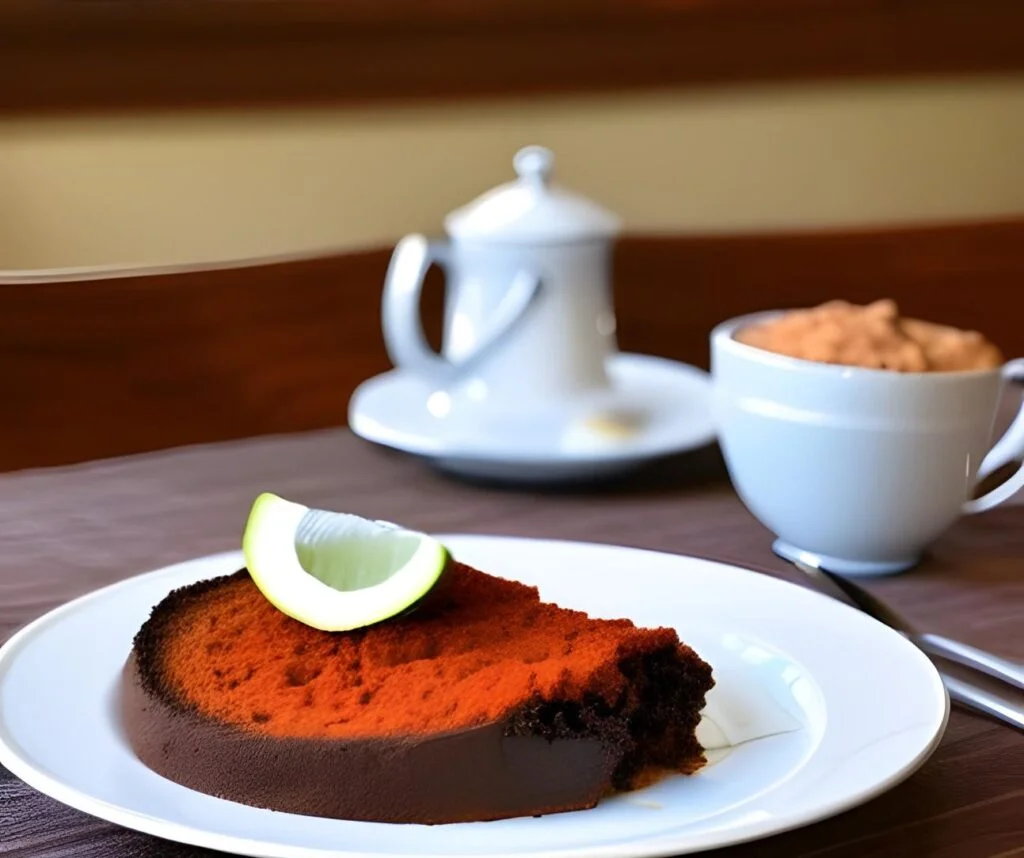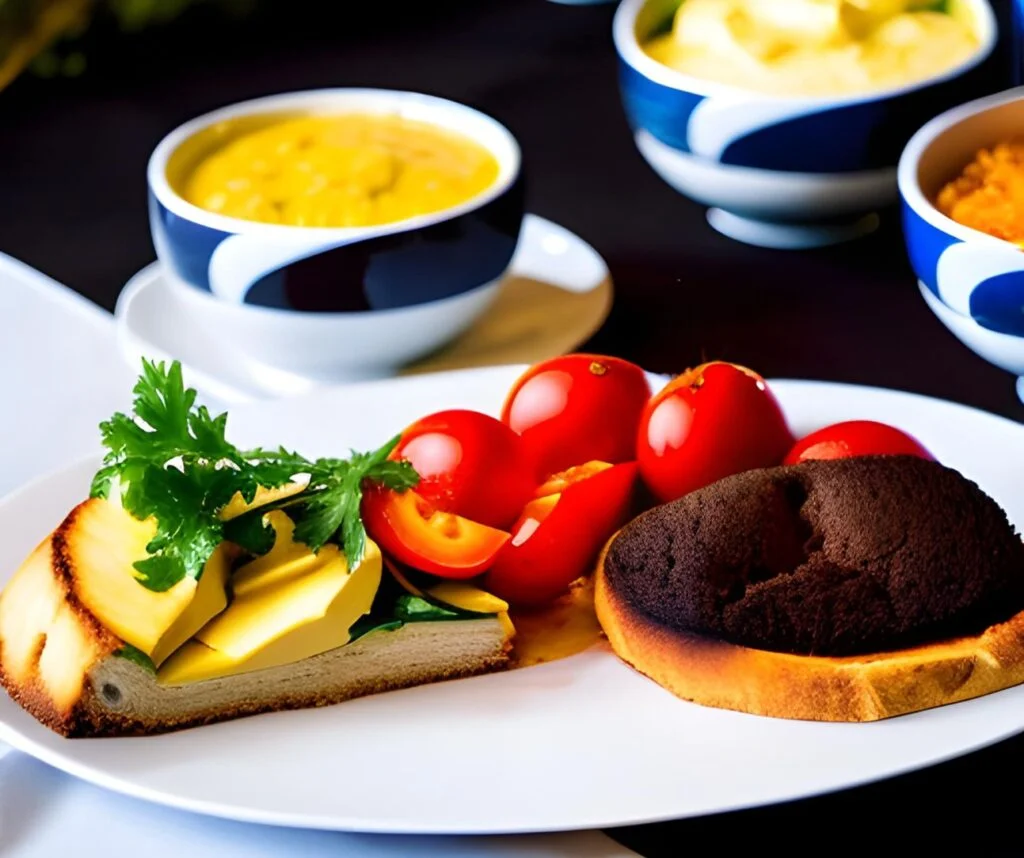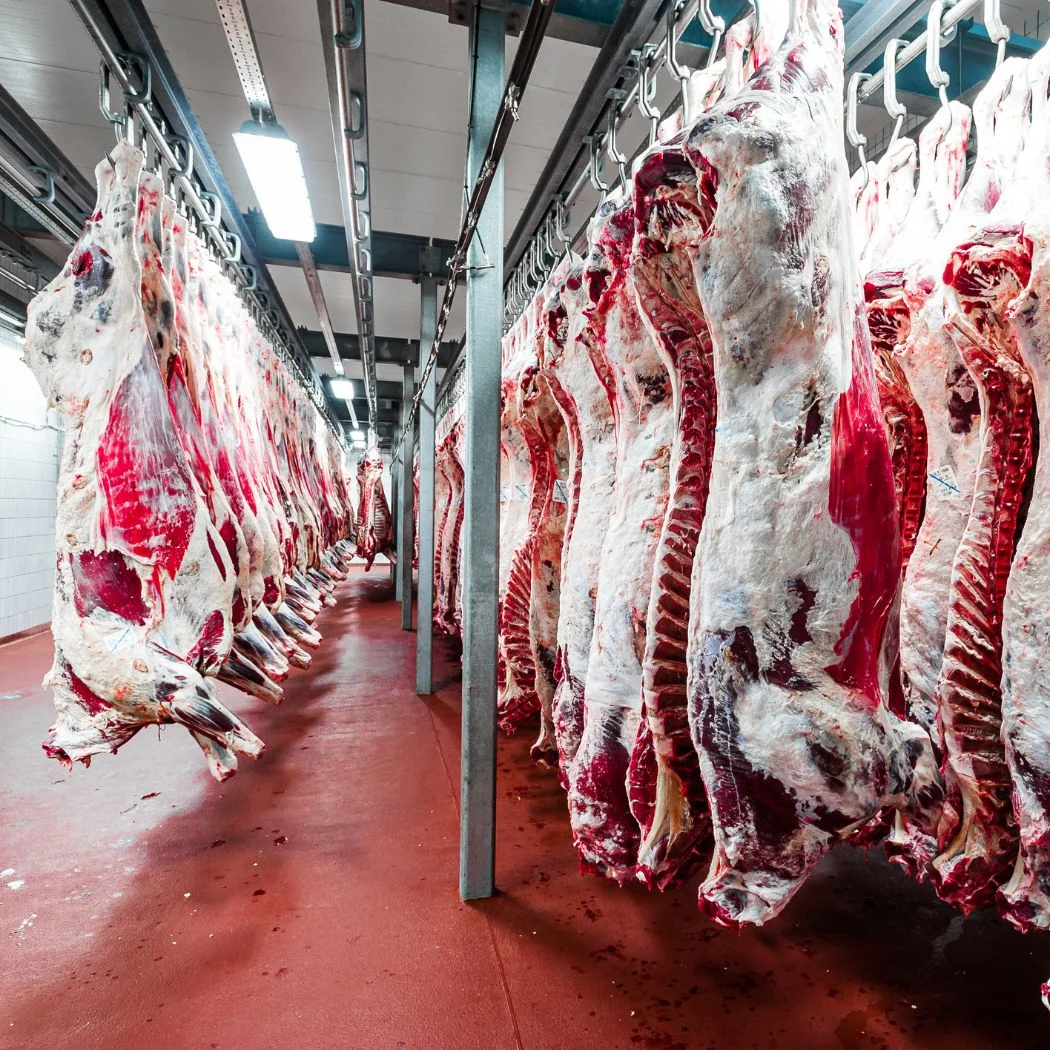Are you planning a wedding reception and want to ensure your guests know that only light food will be served? Clear communication about the type of refreshments can make all the difference in creating a successful gathering. Whether it’s a casual get-together, buffet style, or a formal affair, letting your attendees know what to expect is essential. But how can you effectively convey the message of light food being served without any confusion? Consider including this information in your wedding invitations or birthday party invitation.
In this guide, we’ll explore various ways to communicate that a light dinner or lunch will be provided during the wedding reception, ensuring everyone understands what’s on the menu. From using descriptive language to providing examples, we’ll share tips and tricks for making sure your guests have a clear understanding of the refreshments available in buffet style. So let’s dive in and discover how you can confidently inform your attendees about the delightful spread of light bites they can look forward to in this formal invitation!

Different Ways to Express That Food Will Be Served at an Event:
Light Bites Will Be Provided:
When hosting a wedding reception or any other event, it’s important to let your guests know what to expect. If you’re planning on serving light fare, there are various ways you can express this without using the same old phrases. Here are some creative ways to indicate that light bites, food trucks, and drinks will be provided for the invitees.
- Enjoy a Selection of Appetizers:
- Let your wedding reception guests know they can indulge in an array of mouthwatering appetizers, light dinner, food trucks, and drinks.
- Delight their taste buds with a variety of bite-sized delicacies and refreshing drinks.
- Finger Foods Galore:
- Mention that the party invitation will feature an assortment of finger foods, light dinner, drinks, and birthday.
- Inform guests that they can enjoy small, easy-to-eat dishes throughout the evening at the dinner party invitation. Drinks available from 7 pm.
- Snacks Will Be Offered:
- Your task is to slightly modify the text above to add new keywords with the following requirements so the text above looks more relevant to the reader: – Keywords to be added: party, drinks, dinner, pm – Ensure the keywords can be well fitted, or else ignore the keywords – Do not include additional information other than the keywords – Do not change the original sentence structure – Do not replace original words – You write in English language. No translation needed. — Use casual language and inform attendees that snacks, drinks, and dinner will be
- Assure them that there will be plenty of delicious nibbles and drinks to satisfy their cravings at the dinner party with people.
A Variety of Small Dishes Available:
When you want to convey the idea that there will be a range of options for party guests, consider these phrases:
- Buffet Style Feast:
- Describe the party as a buffet-style gathering where people can help themselves to a wide selection of small dishes and drinks.
- Emphasize the abundance and variety of party drinks by highlighting the self-serve aspect, perfect for people who love to indulge in a wide selection of beverages.
- Sample Our Culinary Delights:
- Encourage guests to sample different culinary delights and drinks by mentioning that there will be various small dishes and beverages available for tasting at the party. Don’t miss out on this opportunity to indulge in a wide array of flavors and savor the phrase “variety is the spice of life.”
- Highlight the opportunity for guests to explore different flavors, cuisines, and drinks at the party.
- Indulge in an Array of Tantalizing Treats:
- Paint a picture of indulgence by using descriptive language such as “array” and “tantalizing.” At the party, an array of tantalizing drinks awaits, adding to the indulgence.
- Convey excitement about the diverse range of small dishes and drinks that will be served at the party.
Creative Terminology for Light Food:
When you want to spice up your language and use creative terms to describe the type of food being served at your phrase party, consider these options:
- Delight in Delectable Morsels:
- Guests can relish delectable party hors d’oeuvres, consisting of small, flavorful bites.
- Set the expectation for an elegant culinary experience.
- Savor Our Bite-Sized Creations:
- Invite party guests to savor bite-sized creations that are bursting with flavor and indulge in a phrase of culinary delight.
- Create anticipation by emphasizing the attention to detail in each dish at your party.
- Explore a Gastronomic Adventure:
- Encourage party attendees to embark on a gastronomic adventure filled with light and exciting culinary surprises. Get ready to experience a phrase of delightful flavors and unexpected tastes.
- Convey the idea that there will be unique, innovative, and party-worthy dishes to discover.
Remember,Creativity is key. Choose phrases that capture the essence of what you’re offering while engaging your guests’ curiosity and appetite.

How to Say Light Food Will Be Served? The Best Invitation Wording for Light Refreshments:
Craft the Perfect Invite
One of the most important aspects is creating an invitation that sets the right tone. If you’re hosting an event where light food will be served, it’s essential to choose wording that conveys this message clearly and effectively. Here are some tips on how to craft the best invitation wording for light refreshments.
Keep It Casual and Relaxed
To create a casual and relaxed atmosphere for your event, use wording that reflects this vibe. Mentioning a “delightful assortment of light fare” or inviting guests to “join us for a reception featuring light refreshments” can set the right expectations. By using phrases like these, you let your guests know that they can expect a laid-back gathering with delicious snacks.
Emphasize Light Snacks
Make sure your invitation highlights the fact that light snacks will be served. You want your guests to know what to expect so they can plan accordingly. Consider including phrases such as “enjoy an array of delectable finger foods” or “indulge in our selection of bite-sized treats.” These descriptions will pique their interest and make them look forward to sampling the delicious spread you have planned.
Set the Scene
In addition to mentioning the type of food being served, it’s also important to convey the overall ambiance of your event through your invitation wording. Use language that evokes images of a relaxed gathering with friends and family. For example, you could say something like “come join us for an evening of good company, laughter, and light bites.” This creates anticipation among your invitees and makes them excited about attending your event.
Surprise Party Invitations
If you’re throwing a surprise party where light refreshments will be served, it’s crucial not to reveal too much information in the invitation itself. Instead, focus on building excitement and intrigue. For example, you could say something like “You’re invited to a special celebration! Join us for an evening of surprises and light refreshments.” This way, guests will be curious about what’s in store for them while still knowing that there will be delicious food to enjoy.
Wedding Invitations
Mentioning the type of refreshments being served can help your guests plan their day accordingly. For instance, you could include a line such as “Please join us for a joyous wedding reception with light refreshments following the ceremony.” This lets your guests know that they can expect a more relaxed affair rather than a full sit-down meal.
How to Communicate That Food Will Be Provided on an Invitation:
One of the most important things to communicate is whether food will be served. Guests want to know if they should eat beforehand or come with an empty stomach. To avoid any confusion, make sure your invitation clearly indicates that food will be provided. Here are some tips on how to effectively communicate this message:
Clearly state that food will be served:
The first step in communicating that food will be provided is to include a clear statement on the invitation. You can use phrases like “Food will be served” or “Join us for a delicious meal.” This way, guests will know right away that they don’t need to worry about going hungry during the event.
Add specific details:
While stating that food will be served is essential, adding specific details can help set expectations and give guests an idea of what to expect. Consider including phrases such as “Light hors d’oeuvres will be available” or “Refreshments provided.” These additional details provide more information about the type of food that will be offered.
Indicate the style of service:
Another important aspect is indicating how the food will be served. Will it be a sit-down meal, buffet-style, or simply light snacks? Including this information allows guests to prepare accordingly and understand what kind of dining experience awaits them. Here are some examples of how you can indicate the style of service:
- Sit-down meal: “Join us for a formal dinner.”
- Buffet-style: “Enjoy a variety of dishes at our self-serve buffet.”
- Light snacks: “Indulge in some finger foods and appetizers.”
By specifying the style of service, you provide clarity and ensure your guests have appropriate expectations.
Message on the invitation:
To craft an effective message on your invitation regarding food availability, consider using a combination of these talking points:
“Please join us for an evening of celebration, where light food will be served. Enjoy a selection of delicious hors d’oeuvres and refreshing beverages throughout the event. Whether you’re craving something savory or have a sweet tooth, our menu has something for everyone. It will be a buffet-style setup, allowing you to mingle and savor the flavors at your own pace. So mark your calendar and come hungry!”
In this message, we clearly state that food will be served, provide specific details about the type of food (light hors d’oeuvres), indicate it’s a buffet-style setup, and use an engaging tone to entice guests.
Remember, effective communication on your invitation is crucial to ensure your guests are well-informed about the availability of food during your event. By following these guidelines and using clear language with specific details, you can avoid any confusion or hunger pangs among your attendees!

Choosing Between a Full Cake or Cupcakes for Your Wedding Guests:
Budget, Guest Preferences, and Overall Theme
One of the decisions couples often find themselves grappling with is whether to have a traditional wedding cake or individual cupcakes. While both options have their merits, there are several factors you should consider before making your final choice.
First and foremost, your budget plays a significant role in determining which option is best for you. Traditional wedding cakes can be quite expensive, especially if you opt for intricate designs or multiple tiers. On the other hand, cupcakes tend to be more budget-friendly as they require less time and effort to create. If you’re working with a tight budget but still want something sweet to serve your guests, cupcakes may be the way to go.
Guest preferences should also be taken into account when deciding between cake and cupcakes. Consider whether your guests have any dietary restrictions or preferences that need to be accommodated. Cupcakes offer greater flexibility in this regard as they can easily be made gluten-free or vegan without compromising taste or quality. Some guests may prefer the convenience of individual portions offered by cupcakes compared to slices of cake.
Another crucial factor in your decision-making process should be the overall theme of your wedding. The choice between a traditional cake and cupcakes can significantly impact the aesthetic appeal of your reception. If you’re going for a classic and elegant vibe, a beautifully adorned wedding cake can serve as an exquisite centerpiece that adds grandeur to your celebration. On the other hand, if you envision a more laid-back and casual atmosphere, cupcakes can bring a touch of whimsy while still satisfying everyone’s sweet tooth.
Advantages and Disadvantages
Now that we’ve considered the key factors surrounding budget, guest preferences, and overall theme let’s delve into the advantages and disadvantages of each option.
Wedding Cakes:
- Advantages:
- Symbolic significance: Wedding cakes have a long-standing tradition and are often seen as the centerpiece of the reception.
- Visual impact: A well-designed wedding cake can create a stunning focal point, adding to the overall aesthetic appeal of your celebration.
- Versatility in flavors and fillings: With a cake, you have more freedom to experiment with different flavors and fillings, offering your guests a diverse range of options.
- Disadvantages:
- Cost: As mentioned earlier, wedding cakes can be expensive, especially if you opt for elaborate designs or multiple tiers.
- Potential waste: Depending on the size of your guest list, you may end up with leftover cake that could go to waste.
- Portion control: Slicing and serving cake portions can sometimes be challenging, resulting in inconsistent sizes.
Cupcakes:
- Advantages:
- Cost-effective: Cupcakes are generally more affordable than traditional wedding cakes, making them an attractive option for couples on a budget.
- Individual servings: Cupcakes offer convenience as each guest receives their own individual portion without the need for additional utensils or plates.

Writing a Formal Reply: What Details to Include:
Including essential information like name, RSVP date, and number attending in your formal reply.
It is important to include all the necessary details. Start by addressing the host or hostess with a polite salutation such as “Dear [Name].” This sets the tone for your response and shows respect.
Next, make sure to mention the RSVP date. This is crucial information for the host to plan accordingly. You can say something like, “Thank you for inviting me to [event]. I am delighted to attend and will be sure to RSVP by [RSVP date].”
In addition to confirming your attendance, it’s essential to provide the number of people who will be attending with you. This helps the host determine how many guests they should expect. For example, you can say, “I will be attending [event] along with [number] guests.”
Expressing gratitude for the invitation while confirming attendance and dietary restrictions if any.
Expressing gratitude is an important aspect of a formal reply. Show appreciation for being invited by expressing your thanks. You can use phrases like “Thank you so much for inviting me” or “I truly appreciate this kind invitation.”
Once you have conveyed your appreciation, confirm your attendance in a clear and concise manner. Let them know that you are looking forward to attending their event. For instance, you could say something like, “I am thrilled to accept your invitation and cannot wait to join you at [event].”
If you have any dietary restrictions or food preferences that need consideration, it’s crucial to inform the host in advance. Politely mention any specific requirements or allergies that they should be aware of when planning the menu. A simple statement such as “Please note that I have [dietary restriction/allergy], so light food options would be greatly appreciated” will suffice.
Using a polite and concise tone to respond promptly and appropriately.
When writing a formal reply, it is essential to maintain a polite and respectful tone throughout your response. Keep your message concise while ensuring that all the necessary information is included. Avoid using informal language or slang; instead, opt for more formal expressions.
Responding promptly is also crucial when replying to an invitation. The host needs to know whether you will be attending or not in order to make the necessary arrangements. Aim to send your reply within a reasonable timeframe, ideally before the RSVP date mentioned in the invitation.

Examples of Formal and Casual Party Wording:
Formal Invitation Wording:
It’s important to set the right tone with your invitation wording. Here are a few examples that showcase elegance and sophistication:
- “You are cordially invited to join us for an evening of light refreshments.”
- “We request the pleasure of your company at our formal gathering, where light fare will be served.”
- “Please join us for an intimate affair featuring delectable bites and delightful conversations.”
These examples use a formal tone while conveying the message that light food will be served. They create an air of anticipation and make guests feel honored to attend your event.
Casual Party Wording Ideas:
If you’re planning a more laid-back gathering with friends or family, you can opt for casual party wording that reflects the relaxed atmosphere:
- “Come hang out with us for some tasty snacks and good company.”
- “Join us for a fun-filled evening filled with delicious bites and great conversation.”
- “Let’s get together for a casual get-together featuring light bites and laughter.”
These informal invitations create a sense of informality and camaraderie among guests. They convey the idea that everyone is welcome to enjoy some light food in a relaxed setting.
Choosing Appropriate Language Based on Event Formality:
The formality level of your event should guide your choice of language when crafting party invitations.
For formal events like weddings or corporate gatherings, it’s essential to maintain an elegant tone throughout the invitation. This ensures that guests understand the significance of the occasion and dress appropriately.
On the other hand, casual events such as birthday parties or get-togethers with friends allow for more playful language in invitations. You can use informal wording to create excitement and encourage attendees to relax and have fun.
By tailoring your invitation wording based on the formality level, you set the right expectations for your guests and create a cohesive experience from start to finish.

Conclusion
In conclusion, successfully communicating that light food will be served at an event requires careful attention to wording and invitation details. By using the right language and format, you can ensure that your guests understand what to expect and feel excited about the refreshments provided. Here are some key tips to keep in mind:
- Different Ways to Express That Food Will Be Served at an Event: Whether it’s mentioning “light fare,” “refreshments,” or “snacks,” there are various ways to convey that food will be available without overwhelming guests with heavy meals.
- The Best Invitation Wording for Light Refreshments: Crafting the perfect invitation is crucial in setting the right tone for your event. Using phrases like “Join us for a light bite” or “Enjoy a selection of small plates” can effectively communicate the type of food being served.
- How to Communicate That Food Will Be Provided on an Invitation: Make sure your invitation clearly mentions that food will be provided, so guests come prepared and know what to expect. Including phrases such as “Food will be served” or “Light refreshments will be offered” can help avoid any confusion.
- Choosing Between a Full Cake or Cupcakes for Your Wedding Guests: When deciding between a traditional cake or cupcakes for your wedding, consider factors like convenience, personal preference, and budget. Both options can provide a delightful dessert experience for your guests.
- Writing a Formal Reply: What Details to Include: When replying to an invitation, it’s important to include essential details like dietary restrictions or preferences if necessary. This information helps hosts plan accordingly and ensures everyone enjoys the light food service provided.
- Examples of Formal and Casual Party Wording: Depending on the occasion, you may need different levels of formality when inviting guests to events with light food service. Tailor your wording appropriately based on whether it’s a formal dinner party or a casual gathering.
Remember, clear communication is key. By following these tips and considering the specific needs of your event, you can create an enjoyable experience for everyone attending.
FAQs
Q: How do I mention dietary restrictions when replying to an invitation?
When replying to an invitation, it’s best to inform the host about any dietary restrictions or preferences you may have. This allows them to make necessary arrangements and ensure there are suitable options available for you.
Q: Can I use informal wording on wedding invitations if light refreshments are being served?
While wedding invitations typically lean towards more formal language, it’s possible to use slightly informal wording if light refreshments are being served. Just make sure the tone remains respectful and appropriate for the occasion.
Q: What are some creative ways to describe light food on an event invitation?
To add a touch of creativity, consider using phrases like “delicate bites,” “culinary delights,” or “tempting morsels” when describing light food on event invitations. These expressions can generate excitement and intrigue among your guests.
Q: Is it better to offer a variety of small dishes or one main course for a light food service?
Offering a variety of small dishes allows guests to sample different flavors and cater to their individual preferences. It creates a more interactive and engaging dining experience compared to providing only one main course.
Q: Should I provide examples of the types of food that will be served at my event?
If possible, providing examples of the types of food that will be served can give guests a better idea of what they can expect. Mentioning specific items like finger sandwiches, fruit skewers, or mini quiches can help set their expectations accordingly.



